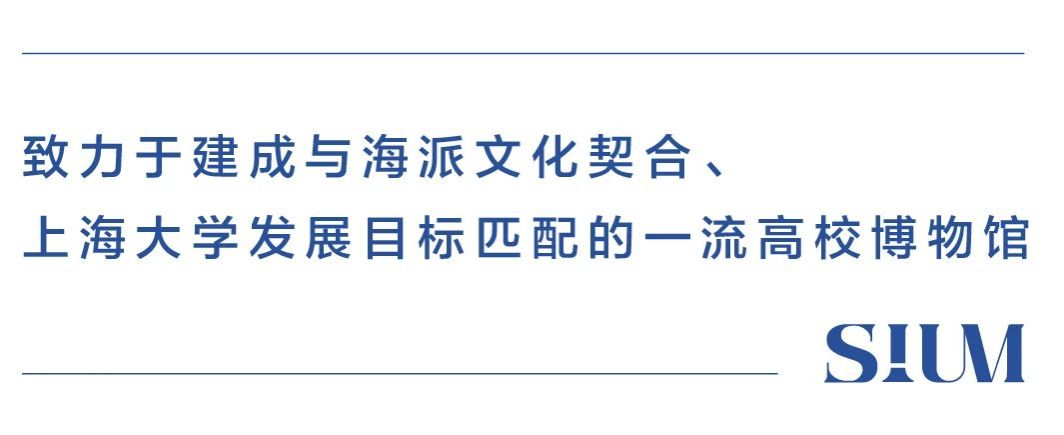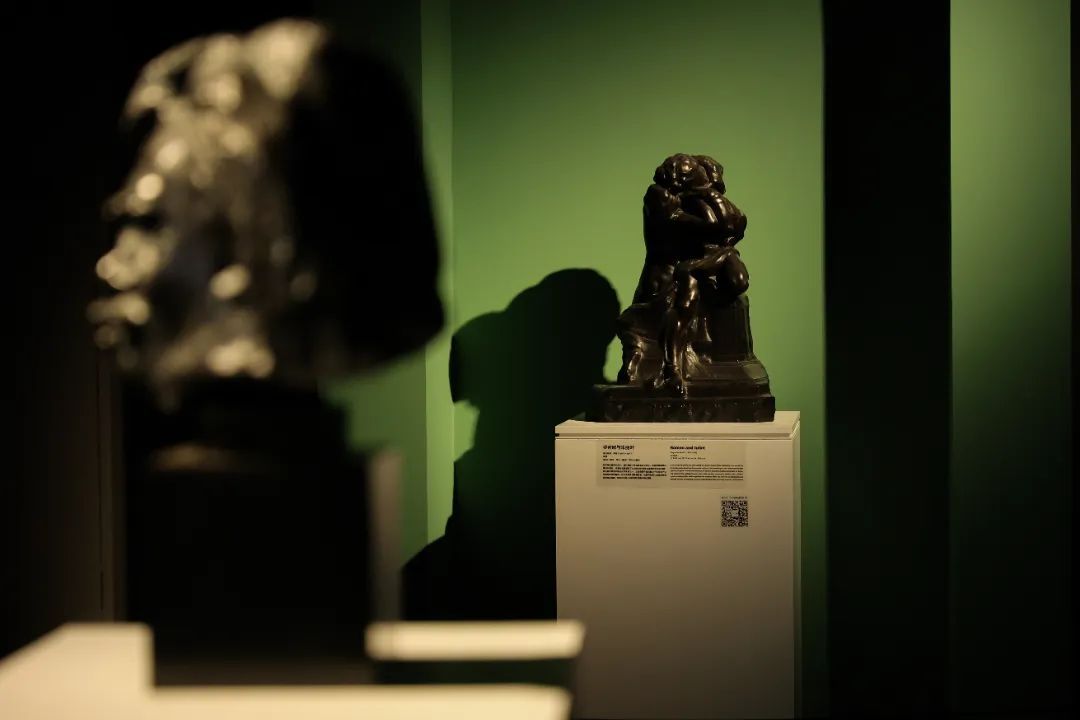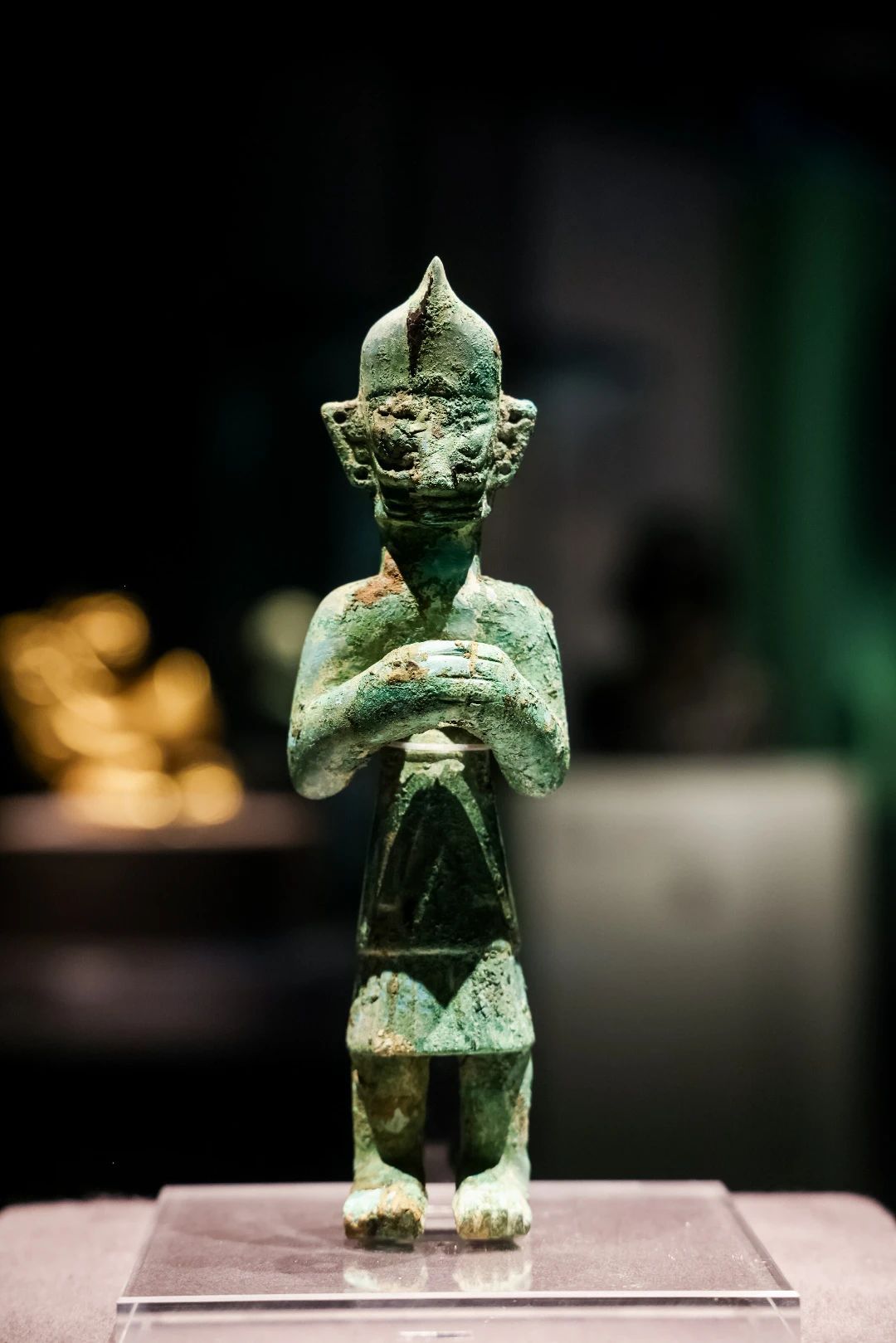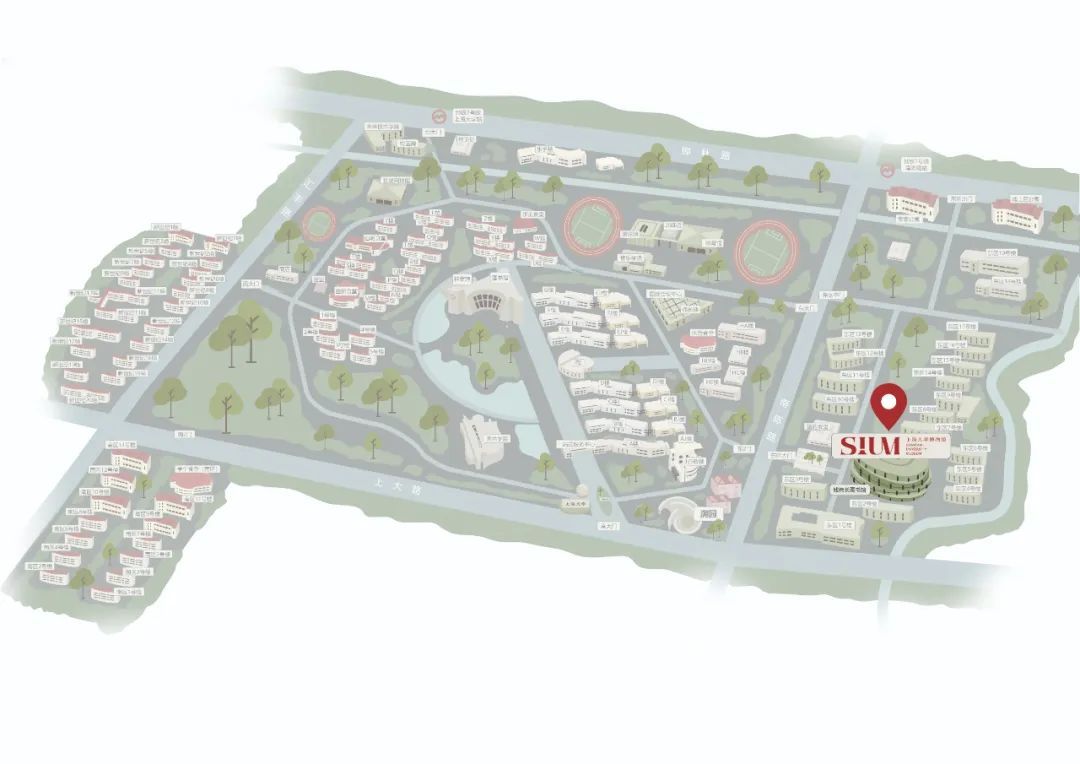
“沉睡三千年,一醒惊天下”的三星堆遗址,是中华文明璀璨星河中明亮而神奇的一颗。
罗丹是“现代雕塑之父”,他的作品中饱含对生命、自然的歌颂、热爱与忧思。
在上海大学博物馆举办的特展——“青铜之光:三星堆与罗丹的超时空对话”展出了许多三星堆、金沙遗址出土文物和罗丹及其同时代雕塑家的作品,让我们一起来详细了解展品背后的故事吧!
《罗密欧与朱丽叶》

· 奥古斯都·罗丹(1840—1917)
· 青铜
· 高68.8厘米,宽51.4厘米,深36.6厘米
· Auguste Rodin (1840-1917)
· Bronze
· H. 68.8cm; W. 51.4cm; Pr. 36.6cm
《罗密欧与朱丽叶》是莎士比亚创作的不朽爱情悲剧,源自15世纪的意大利传说,后来由意大 利作家路易吉·达·波尔图改编成小说,并成为莎士比亚灵感的源泉。这个故事发生在维罗纳市, 两大敌对家族——蒙太古家族和凯普莱特家族,因长久的仇恨成为禁忌。年轻的罗密欧·蒙太古 在凯普莱特家族的舞会上与朱丽叶相遇,两人深爱彼此,却因家族恩怨陷入困境。最终,罗密欧 选择服毒自尽,朱丽叶则用匕首刺死自己,两情相悲,命运的残酷戏剧化展现。
罗丹以他独特的艺术视角重新诠释了莎士比亚的这一经典故事。在罗丹的雕塑作品中,我们看到 了罗密欧坐在长凳上,深情地拥吻着怀里的朱丽叶。这幅作品捕捉到了女性美妙的身姿和爱情所 带来的激情,成为罗丹源源不断的创作灵感之一。与他著名的雕塑作品《吻》类似,这件作品也传达了爱情的沉重和深刻。
这件雕塑作品的魅力不仅仅在于它所描绘的深刻爱情,还在于罗丹的雕塑技艺。他将两位爱人的 情感表现得深情而细腻,呈现出他对人体结构和情感的深刻理解。这一作品存在多个版本,包括 大理石和青铜等不同材质的雕塑,其中大理石版本曾于1900年的巴黎世博会的阿尔玛展馆中展出,彰显了罗丹技艺的成熟和卓越。这件雕塑作品不仅是对莎士比亚作品的致敬,也是罗丹艺术风格的典范之一。通过对爱情的深刻诠释,罗丹创造了一件永恒的艺术作品,展现了他在雕塑领域的杰出才华。
Romeo and Juliet is a timeless love tragedy written by Shakespeare, who was inspired by the novel adapted by Italian writer Luigi da Porto from a 15th-century Italian tale. The story takes place in the city of Verona, where the Montagues and the Capulets are feuding families with long-standing hatred. The young Romeo Montague and Juliet Capulet meet at a ball in the Capulet house. They love each other deeply, yet they are beset with families’old grudges. In the end, Romeo takes his own life with poison, while Juliet with a dagger. The cruelty of fate presents itself in the dramatic death of the young lovers.
Rodin reinterpreted this classic tragedy by Shakespeare from a unique artistic perspective. In his sculpture Romeo and Juliet, sitting on a bench, Romeo holds Juliet in his arms and kisses her passionately. Depicting the graceful posture of the female figure and the passion brought by love, this piece of work became one of the sources of endless creative inspiration for Rodin. Similar to his another famous sculpture The Kiss, this piece also conveys the burden and complexity of love.
The charm of this sculpture lies not only in the touching love story it tells but also in Rodin’s mature sculpting skills. Rodin expresses the emotions of the two lovers in an affectionate and delicate manner, showcasing his deep understanding of human body structure and emotions. There are varied version of Romeo and Juliet, including sculptures made of marble, bronze, and other materials. Representing his mature and exceptional skills, the marble version of Romeo and Juliet was exhibited at the Alma Pavilion of the 1900 Paris Exposition.
This sculpture is not only a tribute to Shakespeare’s play but also an epitome of Rodin’s artistic style. While re-interpreting the love story, Rodin creates an artwork with everlasting charm and evinces outstanding talents in sculpture.
青铜小立人

· 商代后期(公元前1300年—前1100年)
· 宽6厘米,高19厘米,厚5厘米
· 2021年出土于四川广汉三星堆遗址三号祭祀坑,K3QW:310
· 四川省文物考古研究院藏
· Late Shang Dynasty (1300B.C.-1100B.C.)
· W. 6cm; H. 19cm; T. 5cm
· Unearthed from No. 3 sacrificial pit at the Sanxingdui Site in Guanghan, Sichuan, in 2021,K3QW:310
· Collection of Sichuan Provincial Cultural Relics and Archaeology Research Institute
挺身直立,头戴尖顶帽,颈粗肩窄,双手合握于身前,腰间系物,上身着长衣,下着短裙,上衣背部和短裙均有多道纵向折痕,似“百褶裙”,跣足。脸形方正,粗眉大眼,高鼻阔嘴,长方形大耳,正面耳部上下有两处圆形穿孔,背面耳中部有一圆形孔洞,头后有“U”形轮廓,故其发式为“笄发”。尖顶帽顶部左右两侧各有一圆形小孔。
古蜀国的统治阶层由“笄发”和“辫发”共同执政,他们分别执掌着宗教权力和世俗权力。“笄发”有可能掌握神权,从事原始宗教,推测是三星堆王国的祭司或巫师。
The bronze figurine stands upright, wearing a pointed hat on the head, with a thick neck and narrow shoulders. His hands are clasped in front of the body, with an object tied around the waist. He wears a long coat and a short skirt. Both the back of the coat and the short skirt have multiple vertical folds, resembling a pleated skirt. The figurine is barefooted. He has a squareshaped face with bold eyebrows and large eyes. The nose is high and the mouth is wide. The ears are rectangular in shape. There are two round perforations at the upper and lower parts of each ear, while a round hole is located in the middle of each ear on the back. The back of the head has a U-shaped contour, representing the coiled up hairstyle called Jifa (笄发). There are two small round holes on the left and right sides of the top of the pointed hat.
The ruling class of the ancient Shu Kingdom involved the coiled-up-hairstyle group and the braided-hairstyle group, who owned religious power and secular power respectively. The former held divine authority in primitive religion, and undertook the duties of priests or sorcerers in the ancient Shu Kingdom.
展览时间:
2023年12月13日至2024年2月1日
展览地点:
上海大学博物馆一层临展厅
(上海市宝山区南陈路333号)
开放时间:
周一至周日8:30-16:30(16:00停止入馆)
校内师生凭本人一卡通入馆,无需预约。
校外观众采取网上预约方式入馆,扫描下方二维码或关注“上海大学博物馆”微信公众号,点击“个人预约”。

/地址/
上海大学博物馆
(南陈路333号)


